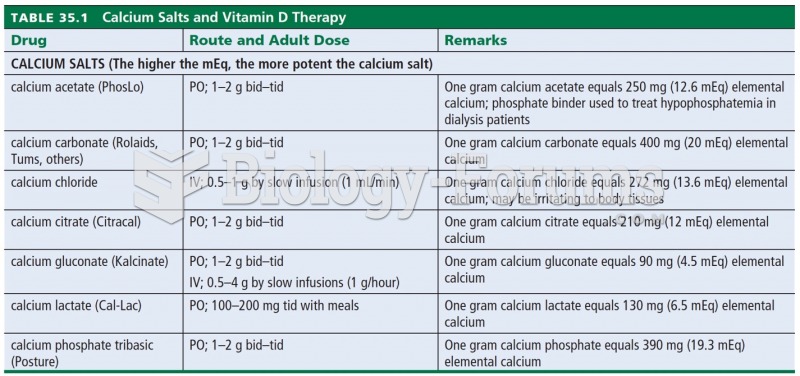Answer to Question 1
Correct Answer: 3
Rationale 1: Cholestatic hepatitis is an adverse effect associated with erythromycin estolate, a macrolide.
Rationale 2: Acute pancreatitis is not associated with tetracycline therapy.
Rationale 3: Pruritus, or itching, and jaundice, a yellowish discoloration of the skin, are associated with fatty degeneration of the liver, a serious adverse effect of tetracycline.
Rationale 4: Exfoliative dermatitis is an adverse effect associated with tetracycline. However, it is associated with pruritus, not jaundice.
Global Rationale: Serious adverse reactions of tetracycline include anaphylaxis; fatty degeneration of the liver, producing jaundice; and exfoliative dermatitis. Cholestatic hepatitis is an adverse effect associated with erythromycin estolate, a macrolide. Acute pancreatitis is not associated with tetracycline therapy. Exfoliative dermatitis is an adverse effect associated with tetracycline. However, it is associated with pruritus, not jaundice.
Answer to Question 2
Correct Answer: 3
Rationale 1: Dairy products decrease absorption of tetracycline (Sumycin).
Rationale 2: GI upset, nausea, vomiting, epigastric burning, and diarrhea are frequent side effects of tetracyclines.
Rationale 3: Tetracyclines decrease the effectiveness of oral contraceptive therapy.
Rationale 4: Esophagitis and esophageal ulceration are associated with taking tetracycline before bed. The client should be instructed to avoid this practice.
Global Rationale: Tetracyclines decrease the effectiveness of oral contraceptive therapy. Esophagitis and esophageal ulceration are associated with taking tetracycline before bed. The client should be instructed to avoid this practice. GI upset, nausea, vomiting, epigastric burning, and diarrhea are frequent side effects of tetracyclines.
Dairy products decrease absorption.







